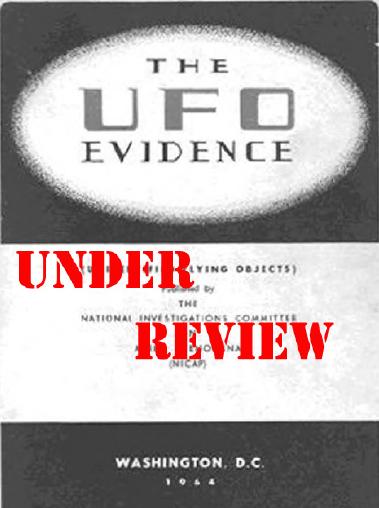.

February 2, 1950
This is how the case is listed in the chronology:
February 2, 1950- -Davis-Monthan AFB, Arizona. Bomber pilot chased UFO which left smoke trail. {III]1
When one reads Section III, the following information is available:
2/2/1950 Davis-Monthan AFB, Arizona - Lt. Roy L. Jones B-29 pilot Chased unidentified object which was leaving smoke trail.[13]2
Note 13 states the information came from the February 2, 1950 Los Angeles Daily Mirror.3
Like so much that is found in “The UFO evidence”, details are often lacking and the dates are sometimes incorrect. The actual date of the event was February 1. The media had published accounts the following day.
Searching for additional information
There are no records in the BB files for this event but it was widely mentioned in the news media. While the descriptions were similar to a meteor, the meteor explanation was ruled out by an expert:
Dr. Edwin F. Carpenter, head of the University of Arizona department of astronomy, said no one at Steward observatory saw the object because none of the staff was viewing the sky at the time. However, he was certain of one thing:
He was certain that the object was not a meteor or other natural phenomena.
Couched In the usual careful language of scientists. Dr. Carpenter said he was.,”Inclined to doubt that it was a meteor because of that object’s heavy discharge of smoke. A meteor rarely leaves a visible trail and, when It does, It leaves only a very light trail.”4
Dr. Carpenter’s word was considered gospel but the general description indicated the object was meteor-like:
Cannonballing through the sky some 30,000 feet aloft was a fiery object shooting westward so fast it was impossible to gain any clear impression of its shape or size.
Despite the hundreds of witnesses, there was little actual explanation on which to peg a clear picture of the event This is what most wit- nesses agreed they saw: A fiery object at very, high altitude streaked across the city. Behind It spread a thick streamer of smoke. Out of sight east of Tucson the smoke disintegrated and fanned outward into a broad band.5
The story about the pilot chasing the UFO was more a case of the pilot reporting the object moved too fast for him to catch it:
The radio operator In the Davis-Monthan air force base control tower didn’t know what It was. He contacted First Lt. Roy L. Jones Jr., taking off for a cross-country flight in a B-29, and asked Jones to investigate. They feared the object might be an airplane with a smoking engine that the pilot had not seen. But Jones revved up his swift aerial tanker and still the unknown aircraft steadily pulled away toward California.6
The writer appears to be exaggerating what actually transpired. He implied the B-29 gave chase for some time but the object slowly pulled away. However, the other descriptions indicated something that was so quick that people barely got a chance to see it. More detailed descriptions appeared in the February 3rd issue of the Tuscon Daily citizen7:
Buster Durazzo - “The object, whatever it was, ripped across the sky very quickly and disappeared suddenly about 100 feet over the Tuc- son mountains. It definitely didn’t drop a smoke trail down and behind the mountains...”
Grace Bautista - “My five brothers and sisters and I didn’t get very excited about it because we didn’t see it. However, mother and father were confused because it moved so awfully fast—they were excited for quite a while.”
Sam Marler - “I though it was a jet plane, but going awfully fast, 1 saw it go down over the Tucson mountains - at least 700 miles an hour. It didn’t leave vapor behind. It was definitely smoke.”
This indicated an object that was visible only for seconds. Even more interesting is that it was not a local event. According to anoth- er news article, the object was visible in another part of Arizona:
A deputy had reported the object flashed across the sky at Ajo, Ariz., 120 miles to the west, then quickly vanished.8
This makes me wonder about the statement attributed to Dr. Carpenter. He stated that meteors normally do not leave smoke trails. However, he is wrong. Fireballs that are visible in daylight or twilight do leave dust trails that look like contrails/smoke. The fireball of December 9, 1965, which sparked the Kecksburg story, left a smoke trail in the sky that last many minutes. The Tagish lake meteorite was produced by a fireball in the predawn sky that left an impressive dust trail. Therefore, the reason he rejected the meteor expla- nation is not based on accurate information. A little checking indicated that Dr. Carpenter’s expertise was not in meteor astronomy but in white dwarves and supernovae.9 He probably had never seen or heard of fireballs leaving such trails in the sky.
Conclusion
Looking at the bulk of the news media accounts, it appears that the object was a bright fireball seen in the evening sky. There is no reason to reject this explanation and it should be listed as probable fireball meteor. It does not qualify as “best evidence".
Quelle: SUNlite 1/2016
4064 Views
